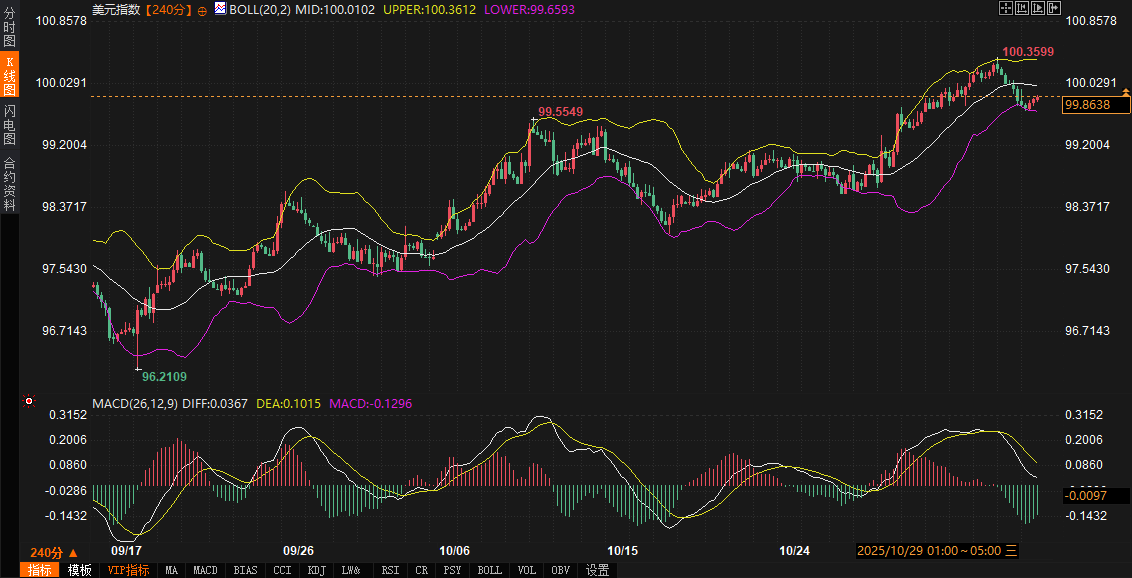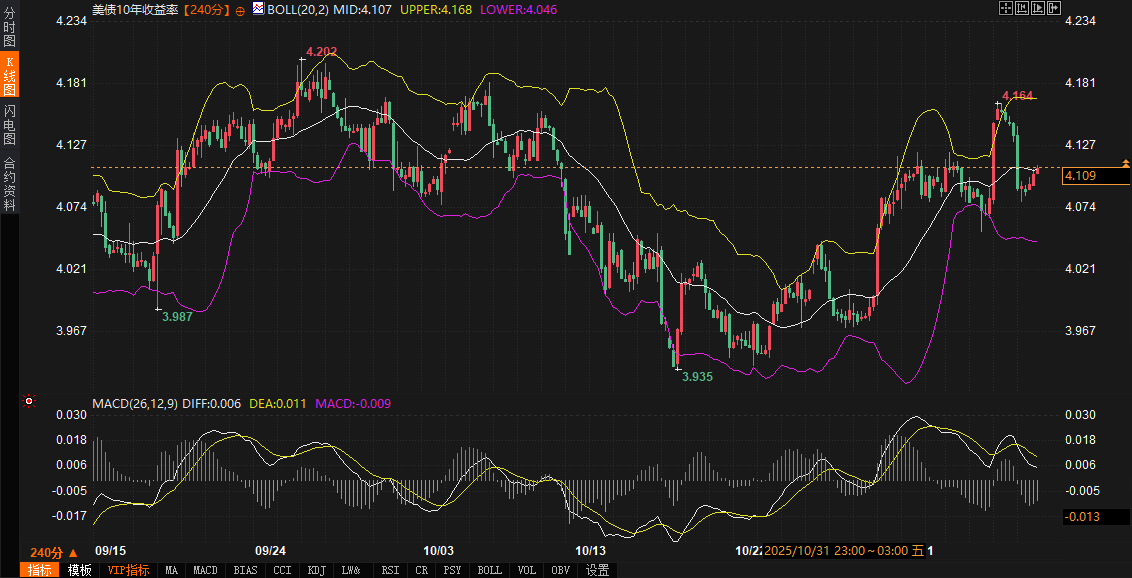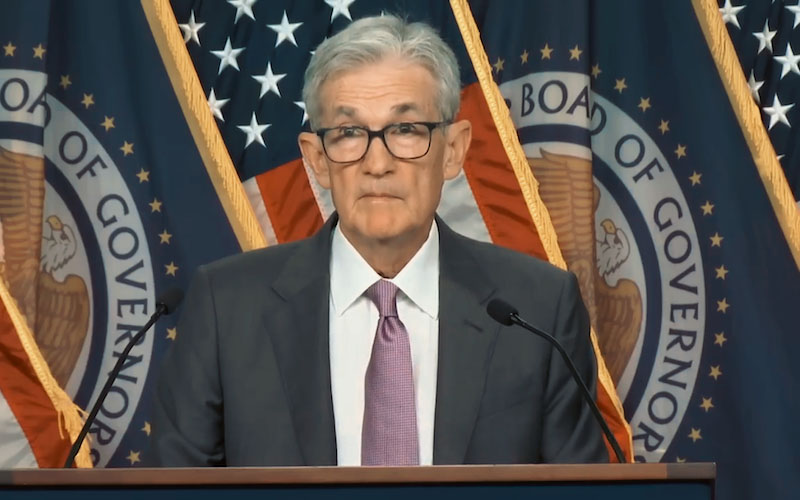The Fed is going to expand its balance sheet! How will Williams' "tolerance level" tear the market apart?
2025-11-07 17:35:26

On that day, the speech by New York Federal Reserve President John Williams became the focus. At the European Central Bank's monetary market conference, he pointed out that after the Fed paused its reduction of bond holdings last week, the next step would be to assess whether reserves had reached an "adequate" level. Once confirmed, gradual asset purchases would begin. This was a response to recent market indicators, including volatility in the federal funds market and liquidity needs in the payment system. Williams emphasized that this process was a natural continuation of the reserve management framework, not a shift in monetary policy, and its aim was to maintain the smooth functioning of the financial system. Market interpretations were divided: some viewed it as a technical adjustment, while others worried about its potential spillover effects, especially against the backdrop of a widening fiscal deficit.
The deeper implications of the Federal Reserve's reserve expansion: a trade-off between liquidity and bond market balance.
The dynamic adjustment of the Federal Reserve's balance sheet has always been a core anchor for the US Treasury market. Williams' remarks mark a critical point in the shift of reserve strategy from passive observation to active intervention. He pointed out that based on signs of pressure in the repurchase market, reserve levels have gradually approached the threshold from "slightly above adequate," requiring the Fed to inject liquidity through bond purchases to prevent market frictions from escalating into systemic risks. It is noteworthy that Williams repeatedly emphasized that this move does not equate to a policy shift, but rather a routine step by the Federal Open Market Committee within the framework of "adequate reserves." This is crucial, as it conveys the Fed's precise anchoring of market expectations: the central bank is willing to allow a certain degree of liquidity replenishment without changing the interest rate path to buffer supply pressure in the bond market.
From a fundamental perspective, the impact of this expansion expectation on US Treasury yields is clear but multi-dimensional. Currently, the US Treasury's debt issuance remains high, with the supply of Treasury bonds exceeding the demand gap. If the Federal Reserve intervenes in bond purchases, it will directly lower the front end of the medium- to long-term yield curve. The interest rate control tools mentioned by Williams—such as overnight reverse repurchase operations and standing repurchase facilities—are still operating efficiently, indicating that the balance sheet expansion is more of a response to structural liquidity rather than a comprehensive easing. However, the market's interpretation of the "degree" is crucial: if the scale of the balance sheet expansion exceeds expectations, yields may face downward pressure, pushing the bond market to pull back from recent highs; conversely, if the Federal Reserve strictly limits itself to a narrow window of ample reserves, yield support will depend more on the resilience of inflation data. Analysts from well-known institutions point out that some Wall Street banks have already seen this as a warning sign of money market stress, and expect that if short-term interest rates rise again, the Federal Reserve's bond-buying pace will accelerate to maintain bond market stability.
Institutional users' observations further corroborate this logic. Some argue that the US money market is facing a potential resurgence of liquidity tensions, making the Fed's resumption of asset purchases a necessary buffer. This echoes Williams's emphasis on "closely monitoring market indicators," including intraday fluctuations in repurchase rates and the settlement efficiency of the payment system. Another trader takes a hawkish approach, citing the St. Louis Fed president's remarks, emphasizing that current policy is in a delicate balance "between slightly tightening and neutral," and that an unsustainable path for government deficits could push up long-term interest rates. This view resonates within the community, reminding investors that balance sheet expansion is not a vacuum operation but rather embedded within a broader fiscal-monetary interaction framework. If the deficit continues to expand, the Fed's tolerance—what Williams refers to as "not representing stimulus"—will become a watershed for bond yields: in the short term, it may alleviate supply pressures, but in the medium to long term, it could exacerbate inflation expectations and raise the floor for nominal interest rates.
The transmission of this fundamental signal needs to be examined within a broader global context. The continued uncertainty surrounding the Russia-Ukraine situation has indirectly amplified the demand for US Treasuries as a safe-haven asset, pushing the yield curve to fluctuate at high levels. Meanwhile, Trump's tariff rhetoric has raised concerns about trade frictions, further reinforcing the role of bonds as a safe-haven asset. Given these intertwined factors, the Fed's decision to expand its balance sheet is particularly crucial: it is not only a tool for liquidity management but also a litmus test for the central bank's tolerance for external shocks. If Williams' emphasis on a "natural step" is interpreted by the market as a easing bias, the decline in bond yields will accelerate; conversely, a signal of maintaining a neutral stance will sustain the resilience of yields around the 4% level.
A Technical Mirror Image: The Resonance of Indicators for the US Dollar and US Treasuries
Integrating fundamental and technical analysis provides a clearer picture of the underlying logic behind the movements of the US dollar and US Treasury bonds. On the 240-minute chart, the US dollar index is currently trading at 99.8500, near the middle Bollinger Band at 100.0096. The channel width between the upper band (100.3616) and the lower band (99.6579) is moderate, suggesting limited short-term volatility. The MACD indicator shows the DIFF line at 0.0358 and the DEA line at 0.1014, both positive, but the DIFF is lower than the DEA. The histogram momentum is converging, reflecting that while the bullish momentum of the US dollar has not exhausted, it faces a weakening of upward momentum. Combined with expectations of the Federal Reserve's balance sheet expansion, this technical pattern can be interpreted as follows: the liquidity injected by reserve expansion may indirectly weaken the relative attractiveness of the US dollar by lowering US Treasury yields, causing the index to peak near the middle Bollinger Band.

Looking at the 240-minute chart of the 10-year US Treasury yield, the price of 4.109 has touched the Bollinger Band middle line at 4.107, with a 0.51% increase pushing it towards the upper line at 4.168, while the lower line at 4.046 provides initial support. The MACD's DIFF (0.006) and DEA (0.011) are both positive, but the slight upward movement of the DIFF indicates emerging bullish momentum, without a strong divergence yet. This echoes Williams' reserve assessment: easing repurchase pressures may allow yields to consolidate near the middle line, absorbing short-term supply-side shocks. Technical traders, discussing Ray Dalio's bubble warnings, point out that central bank bond purchases create liquidity, lowering real interest rates and thus amplifying the relative return discrepancy in asset prices. This observation resonates with indicators: if the upper line of the yield line is breached, US Treasuries will face further upward pressure, while the US dollar index may test the lower line support.

This convergence of technical indicators also requires attention to the correlation between them. The MACD convergence of the US Dollar Index often indicates a sensitive response to US Treasury yields: when the latter stabilizes above the middle band, dollar bulls will get a breather; conversely, if the expansion signal strengthens and yields decline, the lower edge of the dollar channel will become a key observation point. Recently, some in the community have captured this dynamic, with analysts predicting that the Federal Reserve will begin bond purchases in the first quarter of next year, gradually expanding its asset size. This could widen the technical channel, pushing the dollar from its current narrow range of 99.85 to a more definitive trend confirmation. Another trader warns of increasing macroeconomic pressures, with rising bond prices accompanied by dollar stability, and concerns about yields exceeding 5% potentially forcing funds back to safe-haven assets. These views are based on empirical extensions of indicators: the expansion of the Bollinger Bands will be a quantitative reflection of the market trend in terms of the Fed's tolerance—that is, the "degree" of the pace of balance sheet expansion.
At this juncture where technical and fundamental analysis converge, Williams's statement that "it does not equal a policy shift" becomes a key anchor. It reminds the market that the purpose of balance sheet expansion is to maintain ample reserves, not to trigger stimulus spillover, which determines the upper limit of the yield curve's tolerance. If the market overinterprets this as easing, the MACD's DEA line may accelerate upwards, pushing yields above the upper band; conversely, adhering to a neutral framework will allow indicators to revert to the mean-reversion logic of the middle band. Some traders have further deepened this analysis from a long-term perspective, pointing out that under the trend of global multipolarity, the dollar's hegemonic status faces structural challenges, and the Fed's liquidity management will become a buffer, not a dominant force.
Future Market Outlook: Gradual Evolution Amidst Uncertainty
Looking ahead, the US Treasury and the US dollar will likely engage in a gradual struggle over the "degree" of the Federal Reserve's reserve expansion. In the short term, the 10-year yield may find equilibrium around the middle band of 4.107. If repurchase pressure persists, the start of bond purchases anticipated by Williams will provide a downside buffer, pushing it to test the lower band support level of 4.046. Meanwhile, the US dollar index faces the risk of channel narrowing at the 99.85 level. The weakening MACD momentum suggests that if bond yields fall, its upward momentum will be further suppressed, potentially retreating to the lower band of 99.6579.
In the medium to long term, the tolerance for balance sheet expansion will become a dividing line for market trends. Williams' emphasis on a reserve management framework implies that the Fed will use tools such as standing repurchase facilities to finely regulate liquidity and avoid excessive liquidity. This may maintain the resilience of yields in the 4% range, supporting the dollar index's consolidation pattern around the middle band of 100.0096. However, if the unsustainable path of fiscal deficits amplifies supply pressure, a break above the upper band of 4.168% for yields will become a reality, and the dollar will regain its upward momentum thanks to a stronger bond market. Traders' consensus, as highlighted by warnings about the large debt cycle, points out that balance sheet expansion is essentially a signal of easing, and in the later stages of a bubble, high vigilance is needed regarding inflation transmission, which could push the yield curve steeper, benefiting the dollar but accompanied by increased volatility.
Overall, this outlook is not a linear prediction, but rather a dynamic balance based on the Fed's objectives: balance sheet expansion will alleviate liquidity frictions, but its "natural step" positioning ensures that the evolution of the bond market and the dollar remains restrained. Market participants need to continuously track the market indicators mentioned by Williams to capture subtle shifts in this "degree." In the current climate of heightened global uncertainty, the robustness of US Treasury yields and the relative strength of the dollar will together outline the resilience of the financial system.
- Risk Warning and Disclaimer
- The market involves risk, and trading may not be suitable for all investors. This article is for reference only and does not constitute personal investment advice, nor does it take into account certain users’ specific investment objectives, financial situation, or other needs. Any investment decisions made based on this information are at your own risk.





















